Estimation of HT trigger rejection factor for AuAu 62 GeV collisions
The idea here is to use the measured pion spectra to estimate the HT trigger rejection factor for AuAu 62 GeV collisions.
The charged pion spectra were taken from the STAR publication Phys. Lett. B 655 (2007) 104. The pion spectra were measured in 4 centrality bins 0-10%, 10-20%, 20-40%, and 40-80%. I performed a powerlaw function fit to parametrize the pt spectra assuming pi0=pi-. The fit result is shown in Figure 1.
Fig. 1: Powerlaw function fit to parametrize the measured pion pt spectra in 0-10%, 10-20%, 20-40%, 40-80% centrality bins.
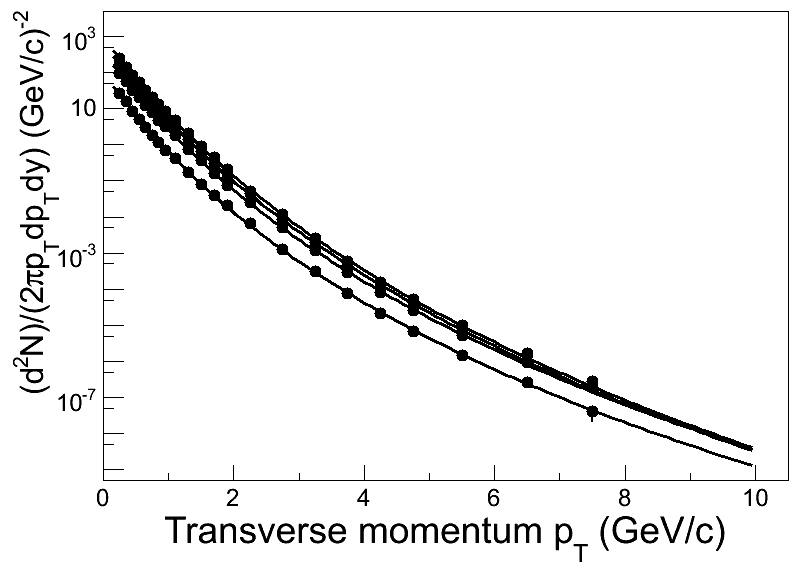
The fit parameters dN/dy, <pT>, and n are plotted in the following plots in Figure 2. For simplicity, I use exponetial fit to the dN/dy vs centrality, and 1st-order polynomial fit to the <pT> and n vs centrality. Then I extrapolate these parameters in 10 centrality bins from 0 to 100% (every 10% per bin) for the fast MC in the next step.
Figure 2. Powerlaw fit parameters for 62 GeV pion spectra for different centrality bins. Use simple function for wide range extrapolation.
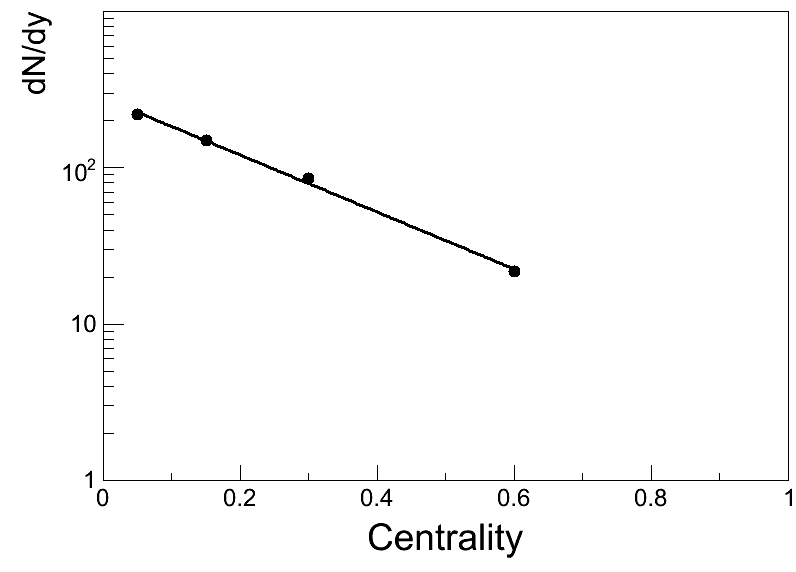 |
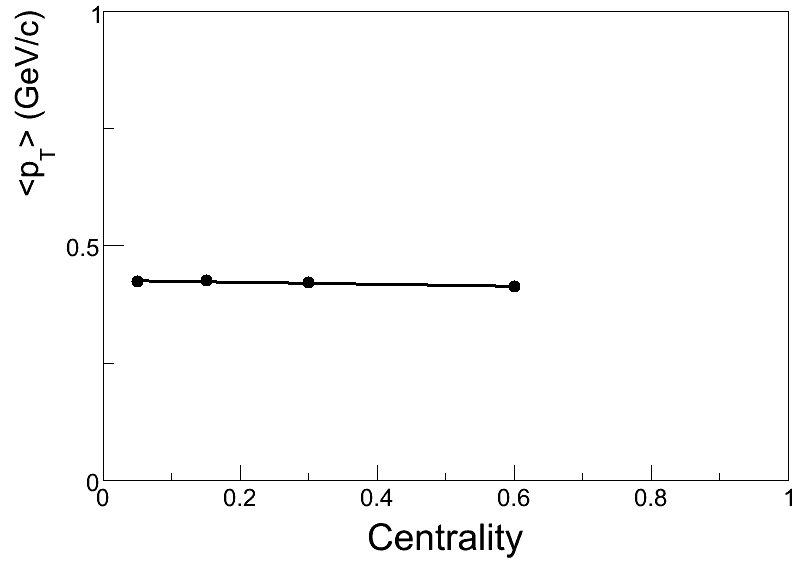 |
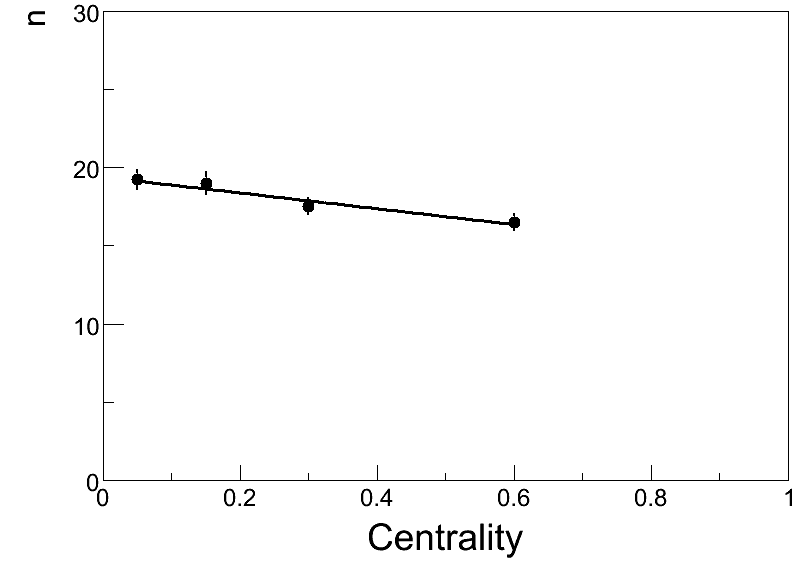 |
Then I use a fast MC calculation to estimate the rejection factor for different HT trigger thresholds. The MC procedure is described as below:
1. Generate event chararistics: Vz and centrality. I have option of fixed Vz, or a gaussian distributed Vz). For centrality sampling, I use 10 bins from 0-100%.
2. The total number of pion0 in this event is determined by the extrapolated dN/dy (Fig. 2) in this centrality bin. I also allow a fluctuation in the number of pion0 assuming Poisson distribution.
3. Then with the pT spectra parameters (<pT> and n) obtained in Fig 2, I then generated a number of pion0s (the total number is from step 2) according to this pT distribution. The pi0s were also generated with flat eta and phi distributions from (-1,1,) and (0, 2Pi).
4. I then calculated the hit position of each track onto the BEMC towers (considering the Vz shift). The Et of pi0s hitting in the same tower were summed up. I also allow a finite tower energy resolution in the calculation. Thus I got the deposite energy in each tower.
5. Verify if this event fires the HT trigger with a certain threshold. Then go back to step 1 for event loop.
Figure 3 summarizes the results of this fast MC simulation for several different choices. There is no big differences between different choices. The result shows at the threshold 3-3.5 GeV, the rejection factor is around 30-100. Given that the estimated collision rate for Run 10 AuAu 62 GeV is around 2-3KHz (according to Jamie), the threshold at around 3-3.5 GeV will allow the L0 rate to be around 20-100Hz.
Figure 3: 1/rejection factor for different energy thresholds in 62 GeV AuAu collisions.
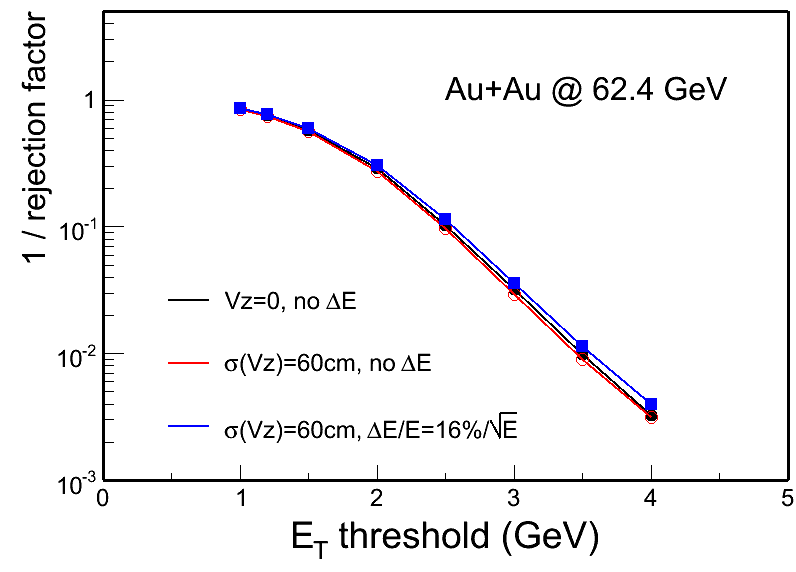
- dongx's blog
- Login or register to post comments
